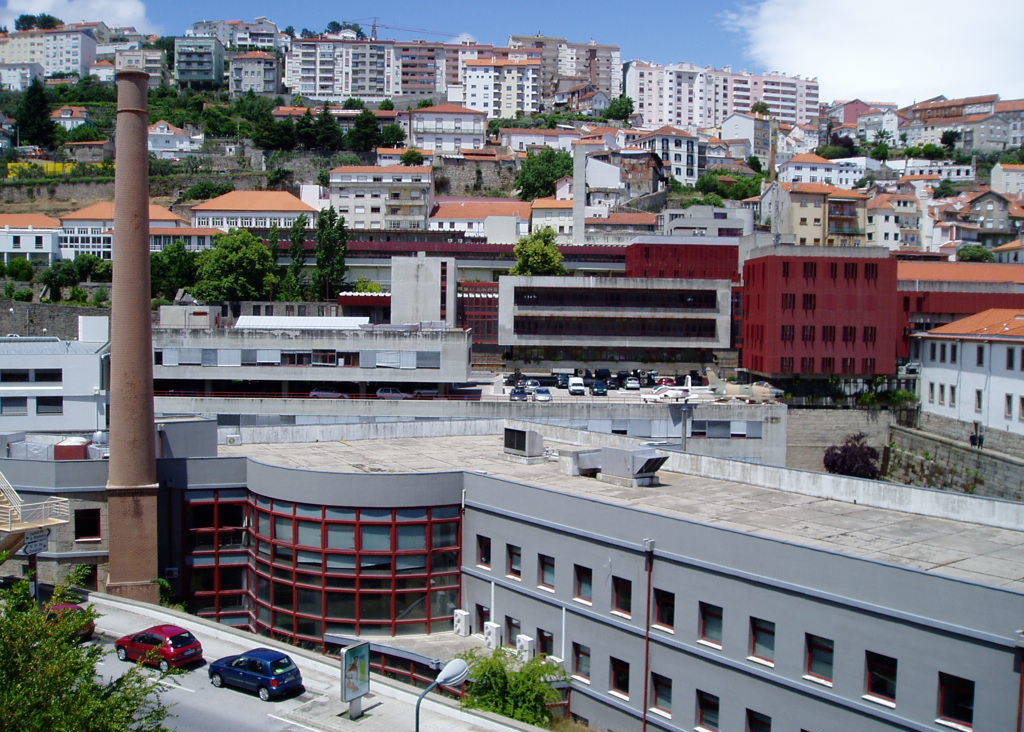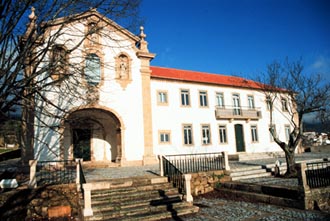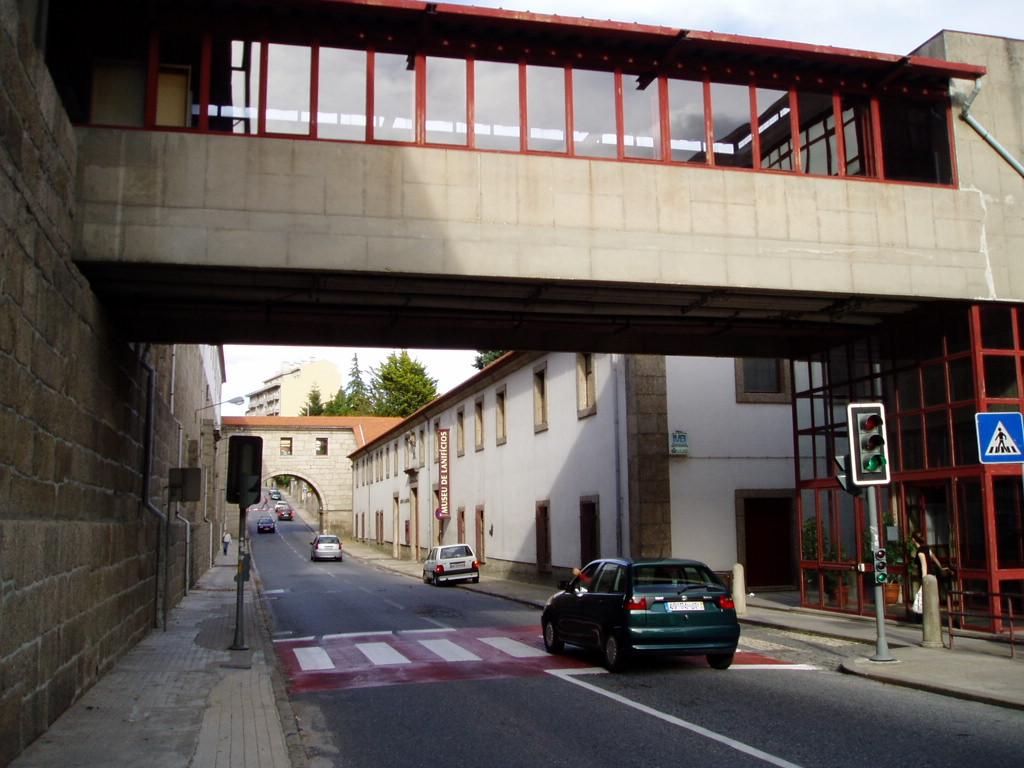
O Local
 A história desta instituição começa no
ano de 1973, quando foi criado o então Instituto Politécnico da
Covilhã, fruto do esforço dos docentes da antiga Escola Técnica
Campos Melo. Não fugindo à tradição local dos lanifícios (a cidade
da Covilhã ficou conhecida como a Manchester
Portuguesa pela sua longa tradição na produção têxtil), os
seus primeiros alunos (143) ingressaram nos cursos de Engenharia
Têxtil e Administração e Contabilidade em 1975. Em 1979 passa a denominar-se Instituto
Universitário da Beira Interior, e em 1986 ganha o título de
Universidade da Beira Interior. O primeiro reitor da
instituição foi o Prof. Doutor Cândido Manuel Passos Morgado, que
exerceu o cargo de 21 de Agosto de 1980 a 19 de Janeiro de 1996.
Seguiu-se o Prof. Doutor Manuel José dos Santos Silva, que ainda se
mantém no cargo até hoje.
A história desta instituição começa no
ano de 1973, quando foi criado o então Instituto Politécnico da
Covilhã, fruto do esforço dos docentes da antiga Escola Técnica
Campos Melo. Não fugindo à tradição local dos lanifícios (a cidade
da Covilhã ficou conhecida como a Manchester
Portuguesa pela sua longa tradição na produção têxtil), os
seus primeiros alunos (143) ingressaram nos cursos de Engenharia
Têxtil e Administração e Contabilidade em 1975. Em 1979 passa a denominar-se Instituto
Universitário da Beira Interior, e em 1986 ganha o título de
Universidade da Beira Interior. O primeiro reitor da
instituição foi o Prof. Doutor Cândido Manuel Passos Morgado, que
exerceu o cargo de 21 de Agosto de 1980 a 19 de Janeiro de 1996.
Seguiu-se o Prof. Doutor Manuel José dos Santos Silva, que ainda se
mantém no cargo até hoje.
 A maioria dos edifícios
resulta da reconversão de antigas fábricas têxteis. O pólo I,
situado junto à ribeira da Goldra (também conhecida por ribeira da
Degoldra), resulta da recuperação da antiga Fábrica Real de Panos
(inaugurada em 1764 por Marquês de Pombal), que entretanto também
tinha servido como quartel militar. O bloco das engenharias,
inaugurado a 8 de Maio de 2000, foi anteriormente a Empresa
Transformadora de Lãs, conforme se pode observar na sua fachada
actual. A biblioteca central, que serviu de sede aos Serviços
Municipalizados de Água e Saneamento, era originalmente a
residência da família Mendes Veiga, enquanto que a reitoria resulta
do restauro do Convento de Santo António, edifício do século XVI.
Já o pólo IV, situado junto à ribeira da carpinteira, resulta da
recuperação da antiga fábrica da empresa Ernesto Crur, sendo por
isso também denominado de pólo do Ernesto Cruz. O edifício do pólo
III foi projectado de raiz para servir a Faculdade de Ciências da
Saúde.
A maioria dos edifícios
resulta da reconversão de antigas fábricas têxteis. O pólo I,
situado junto à ribeira da Goldra (também conhecida por ribeira da
Degoldra), resulta da recuperação da antiga Fábrica Real de Panos
(inaugurada em 1764 por Marquês de Pombal), que entretanto também
tinha servido como quartel militar. O bloco das engenharias,
inaugurado a 8 de Maio de 2000, foi anteriormente a Empresa
Transformadora de Lãs, conforme se pode observar na sua fachada
actual. A biblioteca central, que serviu de sede aos Serviços
Municipalizados de Água e Saneamento, era originalmente a
residência da família Mendes Veiga, enquanto que a reitoria resulta
do restauro do Convento de Santo António, edifício do século XVI.
Já o pólo IV, situado junto à ribeira da carpinteira, resulta da
recuperação da antiga fábrica da empresa Ernesto Crur, sendo por
isso também denominado de pólo do Ernesto Cruz. O edifício do pólo
III foi projectado de raiz para servir a Faculdade de Ciências da
Saúde.
A Cache
O primeiro ponto desta multi-cache encontra-se
junto à reitoria e residências da UBI, o parque de estacionamento
sugerido não é o mais próximo da cache, mas é o único que permite
fazer a cache a qualquer hora do dia, e permite também um pequeno
passeio (cerca de 150m) pelos jardins envolventes da reitoria. O
último ponto encontra-se num dos principais blocos universitários
da UBI. Aconselhamos a visita ao Museu dos
Lanifícios. O museu pode ser visitado todos os dias (incluindo
feriados e excluindo segunda-feiras) das 9:30 às 12:00 e das 14:30
às 18:00. Considerado pela UNESCO o melhor museu têxtil da
Europa, recebeu ainda o prémio de "Melhor Museu" do país em
2002 sem sequer ter concorrido ao galardão da Associação Portuguesa
de Museologia.
ATENÇÃO: Sejam muito
muito discretos, especialmente no ponto final da cache, se forem
muitos tentem que vá apenas um retirar e colocar a cache para
evitar dar muito nas vistas. Deixem a cache como a encontraram e
não se esqueçam Cache in, trash out.

The Place
 The history of this institution begins in
the year of 1973, was created when the Polytechnic Institute of
Covilhã, fruit of the effort of teachers from the former Technical
School Campos Melo. Not fleeing to the local tradition of wool (the
city of Covilhã was known as the Portuguese Manchester for its long
tradition in textile production), its first students (143) joined
in courses of Textile Engineering and Administration and Accounting
in 1975. In 1979 shall be renamed University Institute of Beira
Interior, and in 1986 won the title of University of Beira
Interior. The first was the rector of the institution Prof.. Dr.
Cândido Manuel Passos Morgado, who exercised the office of August
21, 1980 to January 19, 1996. Next came the Prof. Dr. Jose Manuel
dos Santos Silva, who still remains in office until today.
The history of this institution begins in
the year of 1973, was created when the Polytechnic Institute of
Covilhã, fruit of the effort of teachers from the former Technical
School Campos Melo. Not fleeing to the local tradition of wool (the
city of Covilhã was known as the Portuguese Manchester for its long
tradition in textile production), its first students (143) joined
in courses of Textile Engineering and Administration and Accounting
in 1975. In 1979 shall be renamed University Institute of Beira
Interior, and in 1986 won the title of University of Beira
Interior. The first was the rector of the institution Prof.. Dr.
Cândido Manuel Passos Morgado, who exercised the office of August
21, 1980 to January 19, 1996. Next came the Prof. Dr. Jose Manuel
dos Santos Silva, who still remains in office until today.
 Most buildings
resulting from the conversion of former textile factories. The pole
I, located near the river's Goldra (also known as river of
Degoldra), resulting from the recovery of the former Fábrica Real
de Panos (inaugurated in 1764 by Marquês de Pombal), which has also
had served as military barracks. The block of engineering,
inaugurated the May 8, 2000, was previously the Company
transformation of wool, as can be seen in its current facade. The
central library, which served as headquarters for municipal
services Water and Sanitation, was originally the residence of the
family Mendes Veiga, while the rectory clear from the restoration
of the Convent of Santo António, housed in the sixteenth century.
Already the IV pole, located near the river's carpinteira,
resulting from the recovery of the former factory of the company
Ernesto Cruz, it is also called the pole of Ernesto Cruz. The
building of the pole III was designed from scratch to serve the
Faculty of Health Sciences
Most buildings
resulting from the conversion of former textile factories. The pole
I, located near the river's Goldra (also known as river of
Degoldra), resulting from the recovery of the former Fábrica Real
de Panos (inaugurated in 1764 by Marquês de Pombal), which has also
had served as military barracks. The block of engineering,
inaugurated the May 8, 2000, was previously the Company
transformation of wool, as can be seen in its current facade. The
central library, which served as headquarters for municipal
services Water and Sanitation, was originally the residence of the
family Mendes Veiga, while the rectory clear from the restoration
of the Convent of Santo António, housed in the sixteenth century.
Already the IV pole, located near the river's carpinteira,
resulting from the recovery of the former factory of the company
Ernesto Cruz, it is also called the pole of Ernesto Cruz. The
building of the pole III was designed from scratch to serve the
Faculty of Health Sciences
The Cache
The first point of this multi-cache is located
next to the rectory and residences of UBI, the car park suggested
is not the closest of the cache, but is the only one who can make
the cache at any time of day, and also allows a small tour (about
150m) by the gardens surrounding the rectory. The last point is in
a major university blocks of UBI. We recommend a visit to the
Museu dos Lanifícios. The museum can be visited
every day (including holidays and excluding mondays) from 9:30 to
12:00 and from 14:30 to 18:00. Considered by UNESCO as best textile
museum in Europe, also received the prize for "Best Museum" of the
country in 2002, without even have compete, the honor of the
Portuguese Association of Museology.
WARNING: Be very very
discrete, especially in the final location of the cache, if some
try to go one draw and put the cache to be more discrete. Let the
cache as found and do not forget cache in, trash out.

